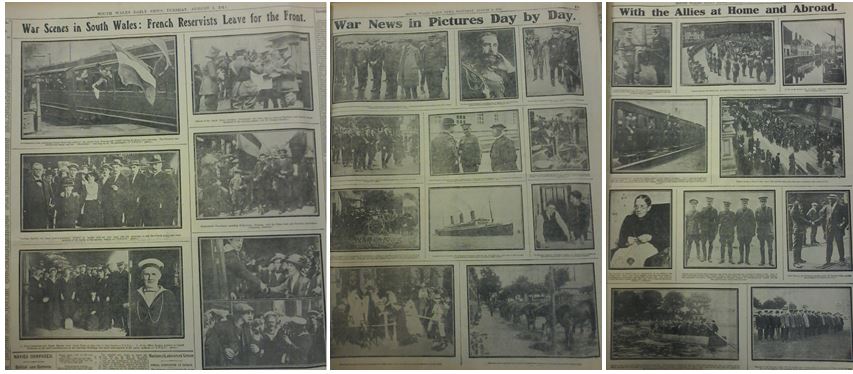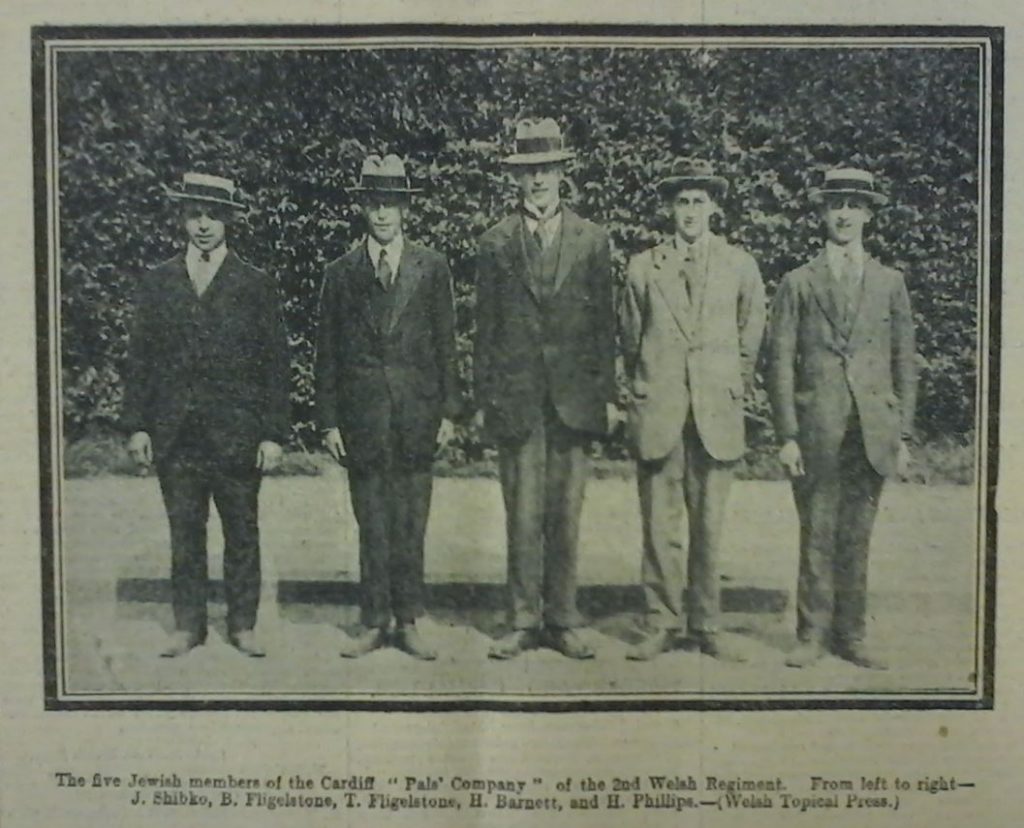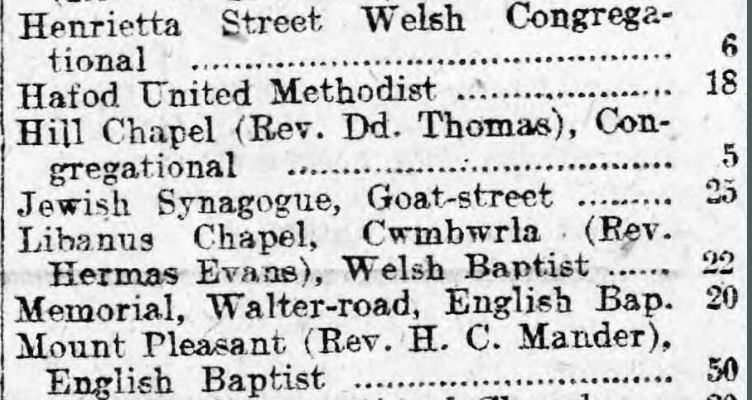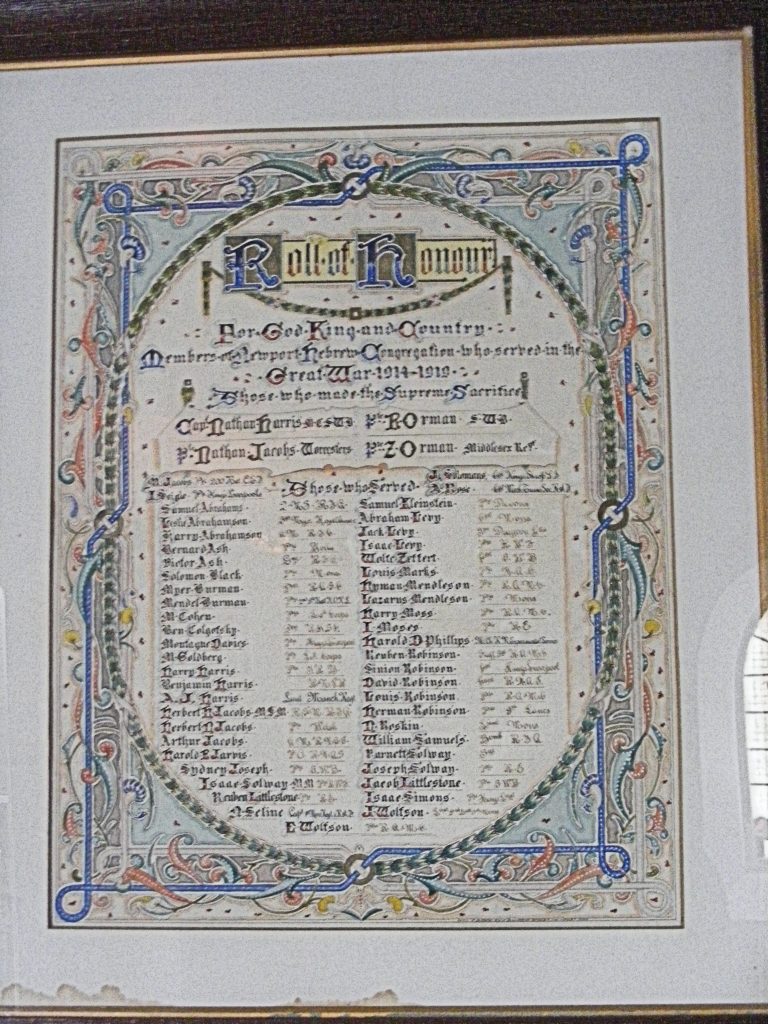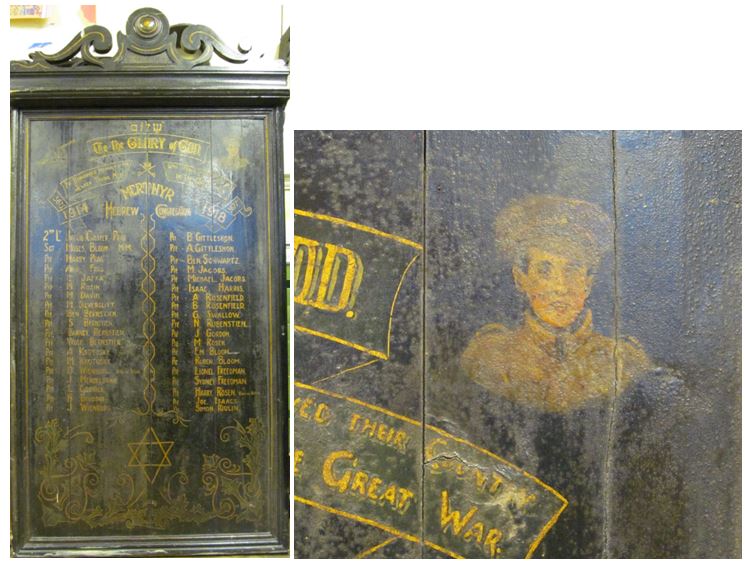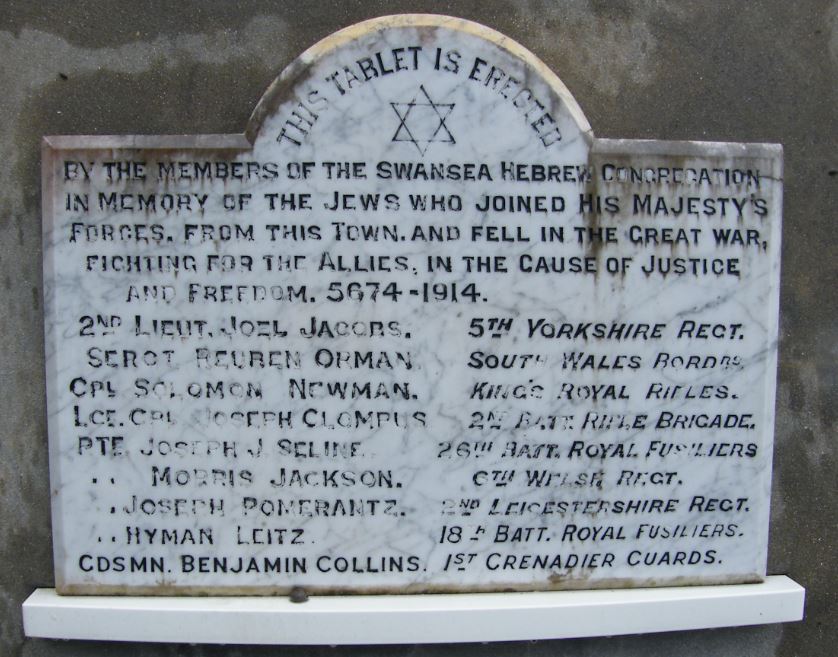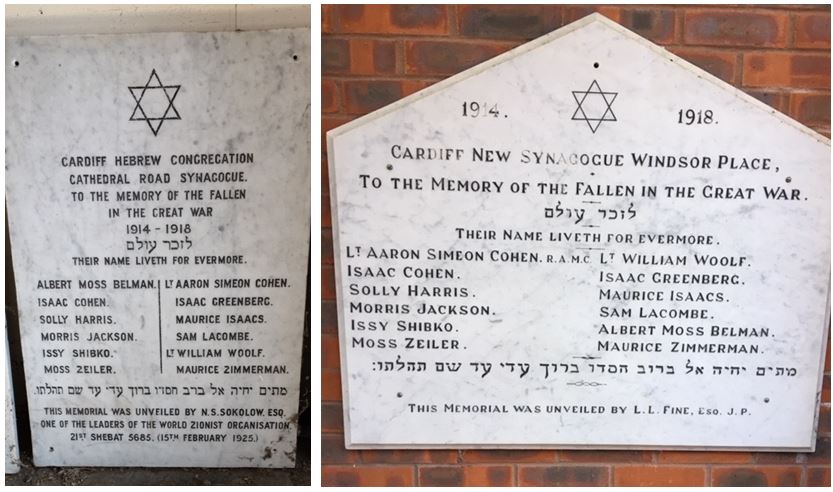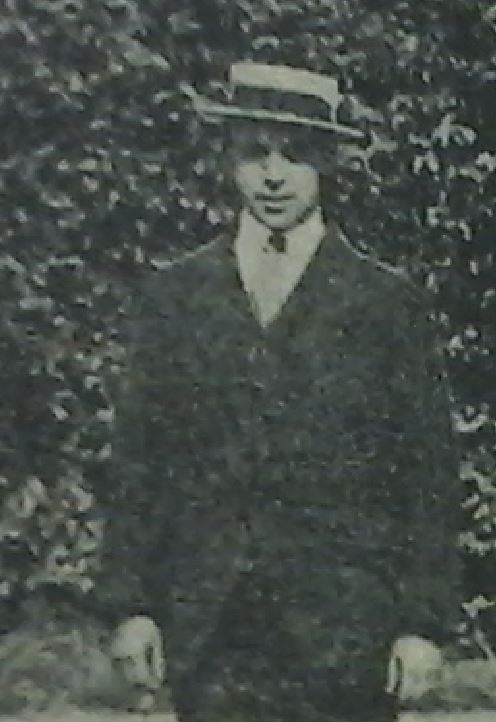Jewish Memorials to the First World War in south Wales
In the first months of the First World War, the South Wales Daily News printed a page of photographs every day showing the latest developments in the war, in particular focusing upon recruiting across south Wales.
A month after Britain’s declaration of war against Germany the newspaper published this picture, showing five Jewish recruits in the ‘Cardiff Pal’s Company’.
This is not unexpected given that the principal purpose of this daily feature was to emphasise how communities and organisations from every class and all areas of Wales were pulling together to support the war effort. Other photographs in the early weeks of the war show members of cricket or rugby clubs, or workmates who have volunteered together.
There are a large number of examples in the newspapers of Wales showing how groups who might previously have been marginalised or ignored were commended for showing their loyalty to the British cause (with much praise, for example, to the Irish community for volunteering). Swansea’s rabbi, M. Lubner, was one of the speakers at one of the town’s largest recruiting rallies in September 1914, and at the start of December a report in the Swansea newspaper, the Cambria Daily Leader, which gave figures for all the volunteers from the different places of worship noted that 25 had joined up from the local synagogue.
Fast-forwarding to the end of the war, organisations of all kinds sought to commemorate their contribution to Britain’s campaign – as numerous blog posts on this website demonstrate!
Two ‘rolls of honour’ commissioned by Welsh synagogues are known to have survived. The ‘Newport Hebrew Congregation’ names four who were killed in action at the top, and then gives the names of 51 men who served and returned. This photograph (courtesy of Shaun McGuire) was taken prior to the memorial being deposited for safe-keeping at Gwent Archives: more information can be found here.
The other extant ‘roll of honour’ is that of Merthyr Tydfil’s Hebrew Congregation, which is held at Cyfarthfa Castle Museum. This has the names of 38 men including two who were killed in action.
One of these, Harry Rosen, is also named in another memorial held at this museum – that of the Crawshay Brothers (Mountain Levels and Steelworks) company.
There are also memorials commemorating those members of synagogues who were killed. There are nine named on the memorial which was established by the Swansea synagogue (now closed).
The two synagogues in Cardiff each commissioned a memorial to all the Jewish men from the city who were killed in the war, with twelve names on them. There is a subtle difference in the ordering: the Cathedral Road memorial lists the men strictly alphabetically while the Windsor Place memorial puts the officers at the top.
One name on these matches a name given on the photograph in the South Wales Daily News of September 1914. Four years after that photograph was taken Israel (Issy) Shibko was serving with the 11th Battalion of the Welsh Regiment – otherwise known as the Cardiff Pals Commercial Battalion – on the Salonika Front in northern Greece. The unit was decimated in what is known as the Third Battle of Doiran, fighting against the Bulgarians: Issy was killed on 18 September. Nothing was gained in this battle despite heavy losses. Within two weeks the Bulgarians had agreed an Armistice.
g.h.matthews June 5th, 2019
Posted In: Uncategorized
